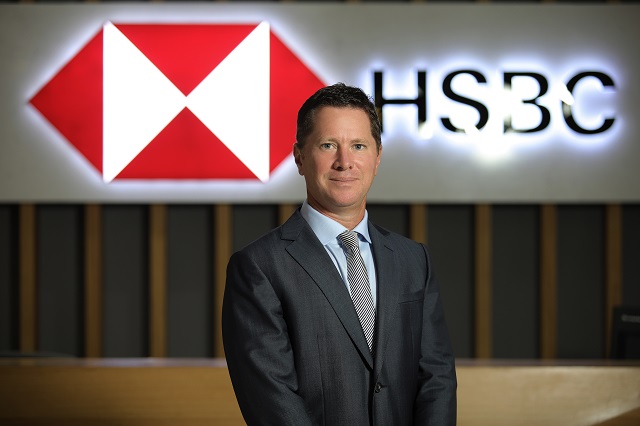
Mr. Tim Evans – CEO HSBC Vietnam
|
The CEO of HSBC Vietnam assesses that the world is spinning at an unprecedented pace. It is important to observe and grasp the trends reshaping economies globally as well as on a regional scale. Escalating political conflicts, increasing trade protectionism, and immediate climate change risks show that the era of globalization no longer dominates, and the world is becoming more multipolar. Asia, which has benefited from its position as a global trade hub for decades, is now facing new challenges.
HSBC believes that supply chains will continue to develop and shift. One trend that will become more prevalent is many economies taking risk-reducing actions in trade with China. This trend will happen despite nearly 70 countries considering China as their main source of imports. ASEAN, in particular, benefits from this diversification trend, and Vietnam is among the countries benefiting the most. Western businesses are diversifying their supply chains away from China by moving their sourcing to other Asian markets, such as Vietnam and India. This region is attracting more FDI than China, notably in the manufacturing sector. China itself is also building supply chains in neighboring countries like Vietnam.
According to a recent survey by the American Chamber of Commerce (AmCham) in China, 60% of US companies express increasing concerns about bilateral tensions, and over 40% responded that they are seeking ways to increase investments to strengthen their supply chains. More than 50% indicate that Southeast Asia is the top destination to shift investments from China. A survey by the European Chamber of Commerce (EuroCham) also shows that European companies operating in China will continue to consider their supply chain strategies with ASEAN, which is chosen as the top relocation destination for these investment shifts.
Vietnam and ASEAN: The supply chain relocation story
The government’s strategy to attract more FDI to Vietnam initiates by understanding and capturing the competitiveness between Vietnam and other ASEAN countries while also evaluating other markets, such as India or Mexico. Singapore and Malaysia are leading the semiconductor ecosystem, with Singapore as the semiconductor and chip manufacturing hub, while Malaysia focuses on packaging and testing. Thailand has become an automotive supply chain and supplier for electric vehicles. Indonesia aims to develop an electric vehicle ecosystem with abundant nickel resources and a large domestic automotive market. Vietnam is gradually entering both the electric vehicle and semiconductor markets, focusing on increasing concentration on high-value-added goods while still maintaining its attractiveness in attracting major electronic manufacturers to the market thanks to competitive prices, stable and consistent government support, effective FTA agreements, and the working attitude of the Vietnamese people.
The next step is to identify the most challenging pain points for foreign investors and develop a comprehensive and feasible action plan to address these pain points. Through conversations with customers, HSBC has identified three prominent points.
Firstly, the quality and access to labor resources as well as the continuous need to improve productivity as Vietnam moves up the quality ladder. Vietnam still lags behind other ASEAN markets in labor productivity with relatively low output per hour worked of 9.7 compared to the 10~26 range of other ASEAN countries.
Secondly, Vietnam’s logistics efficiency index also lags behind China, Malaysia, and Thailand with significant deficiencies in logistics capacity, delivery time, accessibility, etc. Logistics infrastructure does not meet international standards, and road transport accounts for 74% of total transportation means while the demand leans toward maritime transport and seaports, which have supported Vietnam’s exports.
Lastly, adapting to the legal environment continues to be a crucial factor for investors seeking opportunities in Vietnam. According to HSBC’s latest Global Connection survey, legal changes are one of the two biggest challenges for foreign companies operating in Vietnam. 30% of surveyed companies mention difficulties in adapting to fast-changing policies and regulations. Building a stable and applicable legal framework will be a positive step in attracting more investment participants to the market.












